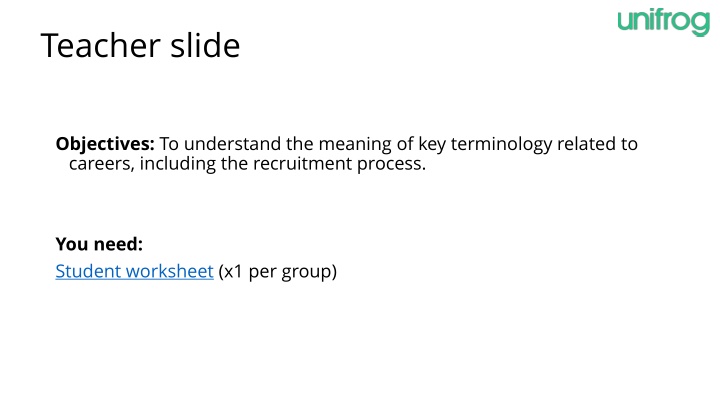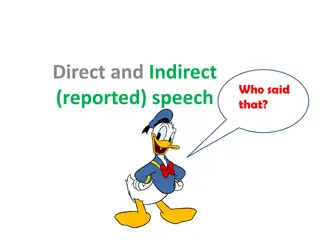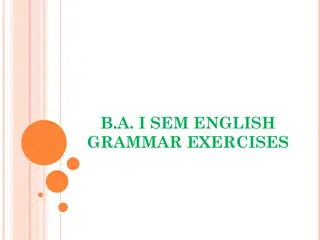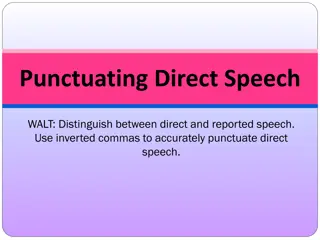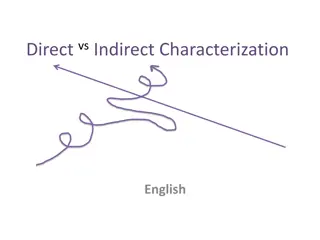Indirect Speech in Spanish
When referring to something said by another person, we use indirect speech. Learn how to convert direct speech to indirect speech in Spanish, including changes in pronouns, verb tenses, and time expressions when the introductory verb is in the past. Explore the transformations in pronouns, determiners, verb tenses, and time expressions in indirect speech scenarios. Discover the modifications in verb tenses for direct and indirect speech situations, along with examples demonstrating the shifts.
Download Presentation

Please find below an Image/Link to download the presentation.
The content on the website is provided AS IS for your information and personal use only. It may not be sold, licensed, or shared on other websites without obtaining consent from the author.If you encounter any issues during the download, it is possible that the publisher has removed the file from their server.
You are allowed to download the files provided on this website for personal or commercial use, subject to the condition that they are used lawfully. All files are the property of their respective owners.
The content on the website is provided AS IS for your information and personal use only. It may not be sold, licensed, or shared on other websites without obtaining consent from the author.
E N D
Presentation Transcript
Teacher slide Objectives: To understand the meaning of key terminology related to careers, including the recruitment process. You need: Student worksheet (x1 per group)
Unifrog resources Career Terminology
Activity 1: instructions When thinking about careers, there is a variety of terminology which is important to understand. 1. Use the worksheet to draw a line to match the career terminology with the definition. 2. Discuss why you think this is the correct answer and discuss any experience you have using this terminology. 3. When you have finished, compare your answers with another pair and discuss any discrepancies.
Activity 1: answers Job shadow: when someone observes a professional in their job. This could be for an hour or for a few months. Qualification: a document proving that someone has passed exams or completed a course. Graduate position: a job available to someone who has recently earned a degree. Benefits: extra things given to you by an employer, aside from your salary. For example; health care, health insurance, payment for extra qualifications. Applicant: the person applying for the job. Assessment day: a way for an employer to assess if you re right for the job. It may involve group and individual tasks, as well as an interview. Job specification: a list of tasks that are part of the job. Contract: a written agreement between the employer and employee. Both must follow the law. Cover note: a letter sent to an employer, with your CV, explaining why you want the job and why you are suited to it. Person specification: a list of skills/qualifications needed to get the job. They are often split into essential (things you must have) and desirable (things it is good to have). References: an explanation of how the potential employer worked in their previous job/place of education, given either verbally or in writing. Salary: the amount an employee gets paid per year.
Activity 2: instructions Make a spider diagram of any one word from the terminology list. Write down everything you know about the word, and do some independent research to find out everything you can! Remember to: - Colour code the different elements of the diagram - Write down where you found the information for anything you did some extra research for - Discuss in groups to create the most comprehensive diagram
Reflection What new terminology did you learn today? Why is it important to understand this terminology? In what situation do you think you will use this terminology?
Sign in at: unifrog.org/student
